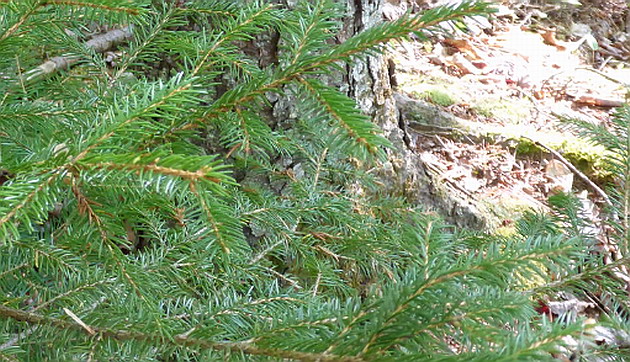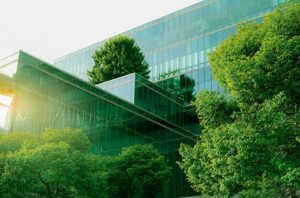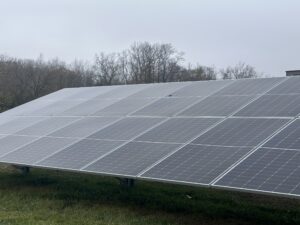Coniferous Forest Biome

The environment on planet Earth contains different types of flora and fauna, which creates several types of biomes representing major habitats occupied by a large and naturally created community of plants, trees, birds and animals.
There are several types of biomes on our planet and they range from the dry deserts to the frozen tundra.
Coniferous forests represent a type of biome that can be found in the temperate climate, but also in the tropical and subtropical climates of the globe in areas such as: Northern America, Europe and temperate Asia, but also in Mexico and Northern India.
In the coniferous forest we can find a large number of coniferous trees, which are called this way because they are producing their seeds inside the cones.
Coniferous Forest Climate
What climate can we found in the coniferous forest?
The climate in the coniferous forest is related to the region in the world where the forest is located.
- Temperate coniferous forests are located in the temperate regions of the planet with an adequate volume of rainfalls (to sustain the forest), warm summers and cool winters.
- Tropical and subtropical coniferous forests can be found at tropical and subtropical latitudes, where climate is humid.
- Boreal forest (taiga) or snow forest represents a biome characterized by coniferous forests located in the very cold areas of the world such as Canada and Siberia.
The summer ranges from mild to extremely hot in these areas, while the winter is extremely cold.
Coniferous Forest Location
Coniferous forests can be found all over the planet.
Temperate regions
- Caledon: United Kingdom
- Scandinavian area: Sweden, Finland, Norway
- European Alps: France, Germany, Italy, Switzerland, Austria and Slovenia
- Carpathian Mountains: Czech Republic, Poland, Slovakia, Romania, Ukraine
- Mediterranean area: Morocco, Algeria, Tunisia
- Elburz Mountains: Iran
- Altai Mountains: China, Russia, Kazakhstan and Mongolia
- Da Hinggan-Dzhagdy Mountains: China and Russia
- The Himalayan Chain: India, Pakistan, Nepal, Pakistan, Bhutan
- East Afghan area: Afghanistan, Pakistan
- Hokkaido Mountains: Japan
- Coastal region of the U.S.
Tropical Regions
- Central American: Guatemala, Honduras, El Salvador, Belize, Nicaragua and Mexico
- Bahamas
- Cuba
- Hispaniola: Dominican Republic and Haiti
- Bermuda
- Luzon: Phillipines
- Sumatran: Indonesia
Boreal Region
Coniferous Forest Temperatures
Exactly like the climate, the temperatures in the coniferous forests depend very much on their location on the planet.
Coniferous forests located in the temperate area
We can find moderate temperatures in these forests with seasonal changes.
In the UK we can find a temperate coniferous forest adapted to greater amounts of rainfall, while in Russia we can find a coniferous forest adapted to colder temperatures.
Coniferous forests located in the tropical area
The coniferous forests located at tropical and subtropical latitudes are adapted to a humid and warm climate, where the average temperatures over the year are around 64 °F (17 °C).
Coniferous forests located in the boreal area (taiga)
The temperatures specific to the boreal coniferous forest are affected by the extreme cold winters in these areas.
The average temperature during the summer is around 45 °F (14 °C), while the temperatures during the very cold winters are averaging -27°C (-16.6 °F).
Coniferous Forest Precipitation
Temperate area
In the temperate area, a coniferous forest will receive an average amount of precipitation between 300 and 900 mm (12 to 36 inches of water), but in some areas (the UK) the coniferous forest can receive as much as 2,000 mm (78 inches of water) per year.
Tropical and subtropical area
In these areas the humidity is very high, and the coniferous forest can receive in only one month (during the wet season) a quantity of rainfall exceeding 60 mm (2.4 inches of water).
Boreal area

Boreal forest (taiga) in Canada.
Due to the fact that the boreal region is affected by extremely cold winters the coniferous forest will receive most the rainfall only during the summer.
The average precipitation in this area is around 300 to 800 mm (12 to 30 inches of water) during the year.
Trees and Plants in the Coniferous Forest
Columbines, Balsam Fir Trees, Poison Ivy, Ferns Black Spruce Trees, Larch Trees, Fireweed, Mushrooms, Blue Spruce Trees, Giant Sequoia Trees, Mosses, Aspen Trees and Poison Oak.
The conifer cones are used by these trees to spread their seeds around the tree, and this way the coniferous forests are growing slowly year after year.
The vast majority of conifers have needle-like leaves, which allows them to collect sunlight with the minimum loss of energy, to tolerate high winds, and very high or freezing temperatures due to the coat of wax that covers the leaves.
Most of conifers can’t be consumed by most of the animal species, however, there are a few animals that have specially adapted digestive systems, which can tolerate the chemicals contained in these leaves.
Conifers have a typical shape of triangle, which allows them to collect and shed the snow without breaking.
Plants in the coniferous forests
Coniferous forests are hosting different types of conifers living along with a variety of plants around them.
- Beaked hazelnut: It is a wild form of hazelnut that was found in the Pacific Northwest area.
- Columbines: Beautiful flowers with reddish petals bringing color to the forest.
- Deer fern (Blechnum spicant): Can be found in coastal U.S., Pacific Northwest and also in Europe and Asia.
- Fireweed: Is a gorgeous wild flower with purple or magenta petals, is edible and is considered a nutritious food.
- Licorice fern: Usually grow on trees in a position that is opposite to the ground.
- Mycorrhizal fungi: These are mostly found in coniferous forests, living around the roots of the conifers, and they contribute to the trees by growing the amount of nutrients in the soil where the roots are located.
- Nootka rose: a very beautiful flower that can be found in coniferous forests of Northwest America and Canada
- Pitcher plant: Is a “carnivorous” plant living close to the trees in an area with shadow created by the tree crown.
The plant consumes different types of insects to get nutrients. - Poison Ivy: Is a plant located in almost all coniferous forests of the United States and southern Canada.
- Plume moss: a branched feathery moss that grows on decaying wood.
- Reindeer moss (Caribou moss): This is a common lichen that dominates the ground in boreal pine forests, but also in other habitats.
- Salal: A thick shrub with edible berries located in the Pacific Northwest.
- Saskatoon berry: Another shrub with edible berries and flowers that is located in North American forest.
- Slippery jack (Suillus granulatus): Is an edible mushroom usually found in the pine forests.
- Sword fern: Is an evergreen fern native to western North America that lives in moist coniferous forests at low elevations.
- Thimbleberry: A common plant in the coniferous forest that produces a small edible fruit and is usually found on forest trails.

Pitcher plant consumes insects to get its nutrients.
Trees in the coniferous forest
- Balsam Fir Trees: Is a native evergreen tree that is well-adapted to cold climates found in Northern United States and Canada, and is mostly used as a Christmas tree.
- Ferns Black Spruce Trees: Is a tree that grows pretty tall (up to 25 meters tall) and can be found in the taiga biome.
- Larch Trees: An evergreen tree with brilliant color, during the spring and summer looks like an evergreen tree, but in the fall its needles turn golden yellow and drop to the ground before the winter.
- Blue Spruce Trees: Is a species of spruce tree that grows up to 50 meters tall (is a beautiful evergreen tree).
- Giant Sequoia Trees: Are considered the largest and the tallest trees in the world because they can live over 3,000 years and grow extremely tall (140 to 160 meters tall).
- Usually they live along with their mixed coniferous forest neighbors.
- Aspen Trees: These are medium-sized deciduous trees that can reach up to 30 meters in height and can be found mixed with coniferous forests.
- Poison Oak: Is a poisonous shrub that can be found in fir forests.
Animals in the Coniferous Forest
-
Coniferous forests are home for all kinds of creatures (from tiny microbial organisms up to very large and dangerous predators).
- Nematodes: represent tiny organisms living in the soil of the forest and their job is to decompose dead organic matter.
- Mosquitoes: These annoying insects can be found in almost any habitat with stagnant water.
- A pretty aggressive species of mosquitoes that can be found in the tropical forest, but also in the boreal forest.
- Caterpillars and moths: Can be found in almost every place on the planet where the green leaves are present, and the coniferous forests can be affected by these creatures because they can harm branch development while being in the caterpillar stage.
- Engelmann spruce bark beetles: these insects are great fans of the bark of the spruce, but they can be very destructive for the trees.
- Different types of Amphibians: Frogs, lizards and salamanders, these creatures can be found in forests with warmer temperatures and increased moisture.
- Crossbill: is a bird with a beak specifically designed for eating cone seeds.
- Canada geese: these birds migrate in the colder periods of the year, and can be found all over the North American forests.
- Chamois: is an animal similar to a goat that can be found in Europe’s mountain forests.
- Different types of rodents: mice, squirrels, and chipmunks are very common in the coniferous forests due to the abundance of food and due to the fact that the trees are providing protection and a good shelter.
- Beavers: these animals are pretty common in all forests.
- Wolverines: these fierce creatures that are no larger than a weasel can be found in the coniferous forests of North America, Europe, and Asia.
- Bears: the largest predators of the forest, they hibernate during the winter in order to survive dropping temperatures and the lack of food. Black bears and Grizzly bears are pretty common in the coniferous forests.

Black bear and Grizzly bear encounter in the coniferous forest.
Final thought
All these plants and animals specific to the coniferous forest need to be protected because they are part of nature.
Without protecting the coniferous forest (the evergreen forest), the environment will be seriously affected and along with it our life here on the planet.







